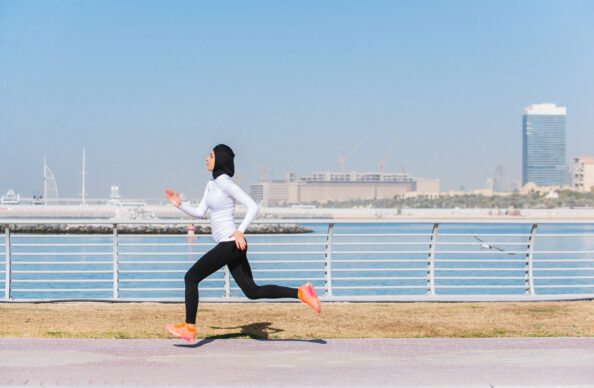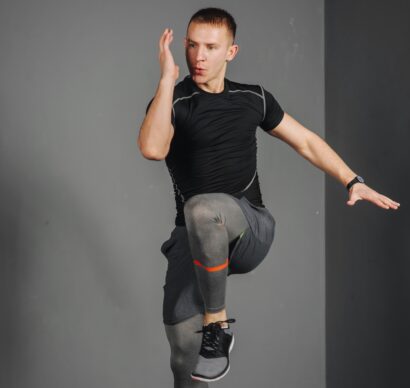By Devin Blessing, PT, DPT, OCS
Achilles tendinopathy is a condition that many runners will deal with during their running career. Novice runners may get it from progressing too quickly and doing “too much too soon.” Master runners may get it from declining calf strength with age. Runners of all experience and performance levels may deal with it for any number of biomechanical issues. Although painful and frustrating, it doesn’t have to keep you from running for long if you rehabilitate it the right way.
One of the biggest issues I see in runners coming back from an Achilles tendinopathy is incomplete rehab before returning to running. Most of the time they rest it, maybe do a little stretching, maybe even seek out a massage therapist to do a sports massage, and when the pain calms down, they decide it’s time to start running again. Sound familiar? Read on.
Any rehabilitation method that does NOT include progressive loading is not going to
appropriately heal your Achilles tendinopathy. Your calf and Achilles complex has to withstand anywhere from 2.5x to 8x your body weight while running. If you strained your quad, would you get a massage and then get under a squat rack with 300+ pounds on the bar your first time back? Of course not! Below are some simple loading progressions to go through that will help you fully rehabilitate your Achilles tendon.
Single Leg Calf Raise Isometrics (10” x 10)
Any progressive loading protocol should start with isometrics and progress to concentrics, eccentrics, and eventually plyometrics. We will start with a single leg calf raise isometric. Isometrics are a good way to reduce pain in an injured tendon and stimulate blood flow during the acute phases.
Concentric Single Leg Calf Raise (3 x 10 to 3 x 15)
Next we will progress to single leg calf raises. Start at 3 x 10 and progress to 3 x 15 before adding weight. In this video, I am standing on a step so that my heel dips below level to maximize range of motion. However, if you are dealing with insertional Achilles tendon pain, you will want to perform this exercise from the floor so that you do not go past the level.
Eccentric Calf Raise (3 x 10 to 3 x 15)
When you can successfully complete 3 x 15 single leg calf raises without pain, you will add in eccentric calf raises. Eccentric movements focus on the “negative” portion of the movement, so you will want to focus on the slow lowering of the heel back to the ground. This has shown to put increased stress on the tendon to help rehabilitate it. Be aware, eccentrics usually cause more soreness when you initiate them so don’t worry if you feel a slight increase in symptoms after your first few sessions of this exercise.
Pogo Hops (3 x 30”)
Finally, we will progress to plyometric loading of your Achilles tendon. Pogo hops are a great way to initiate this. You are training the spring-like components of your Achilles tendon to absorb and produce energy. The key here is taking the rest of the leg out of it, so you should not be bending your knees (as in a squat jump) and just hopping from your ankles. When you can successfully perform these on 2 legs, you can progress to performing them on a single leg.
There are often scenarios where other biomechanical issues or training errors are contributing to an Achilles tendinopathy, so do NOT use this as your only source of rehabilitation. Schedule an appointment with one of our running specialist physical therapists to get a proper evaluation and a more complete plan.
For more of our running guides, read about targeted muscles that are often overlooked, or foot and ankle adaptations that can help you improve your running performance.




